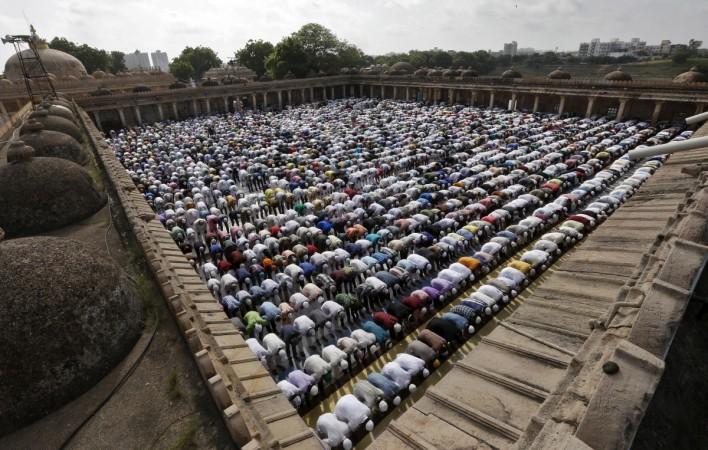
Eid al-Adha, also known as Greater Eid or Bakr-Eid or Feast of Sacrifice, is one of the two major festivals as per the Islamic calendar – the former being Eid al-Fitr, which marks the end of Ramadan. Eid al-Adha represents the end of Hajj and falls on the tenth day of Dhu al-Hajj – the 12th and final month in the Islamic calendar.
Eid al-Adha celebrations last for three days during which people sacrifice domestic animals such as cow, sheep, goat or camel, depending on the region. On the day of Eid, which is falls on Sept. 12 in most countries such as Saudi Arabia and on Sept. 13 in countries such as India, Muslims follow the traditional practices.
Eid al-Adha begins with prayers of Eid, which is performed once the sun has completely risen. The Eid prayers are held in open field called Eidgah and people greet and wish each other following the sermon. Affluent Muslims who can afford must sacrifice livestock, which symbolises Prophet Ibrahim's willingness to sacrifice his only son.
Ibrahim's submission to God's command was so dear that the act of sacrifice was mandated on all Muslims performing Hajj. And any Muslim not performing Hajj, but can afford a livestock must sacrifice an animal during the first three days of Eid al-Adha.
After sacrificing the livestock, it is Sunnah to divide the meat into three parts. The family can retain one third of the sacrificed meat, the other third goes to the relatives, friends and neighbours and the remaining third is distributed among the poor. During Hajj, the sacrificed meat is distributed among the less fortunate.
The tradition of sacrifice accounts for the slaughter of more than 100 million animals in just two days of Eid. In Pakistan, nearly 10 million animals are sacrificed on Eid, the cost of which is estimated to be around $3 billion.
















